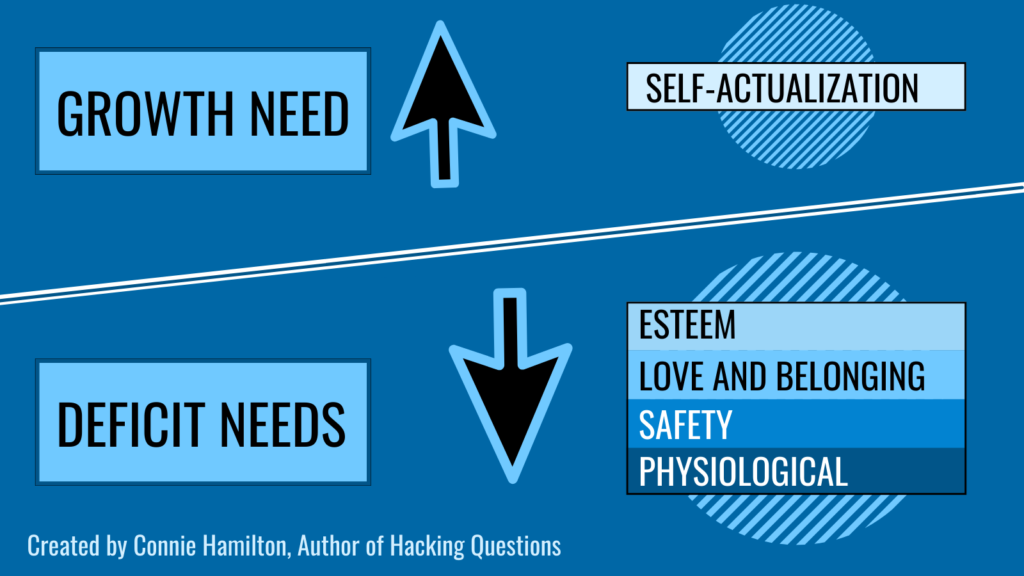Take heed to the interview with Connie Hamilton:
Sponsored by Right now by Studyo and Scholastic Scope
This put up accommodates Amazon Affiliate hyperlinks. Whenever you make a purchase order by these hyperlinks,
Cult of Pedagogy will get a small share of the sale at no additional price to you.
I want, in my early profession, I understood why some college students tried so arduous to impress their mates. I recall the faces and circumstances of particular college students all through my profession when college students’ actions simply didn’t make sense. As an alternative, I thought they had been merely exhibiting “attention-seeking habits.” My antidote was to bathe them with constructive consideration after they did one thing good. My hope was that the popularity I offered fulfilled their should be affirmed, elevated their standing in my classroom, and would cut back their urge to blurt out unrelated and generally ridiculous feedback simply to get fun.
The issue was, I used to be solely half appropriate with my novice prognosis of pupil habits. I used to be heading in the right direction to acknowledge it as an esteem subject. Nevertheless, what I missed utterly is how and why esteem wants trigger college students to behave in ways in which defy what they know as proper, to disregard their very own strengths and accomplishments, and to limit their success as a learner.
Some educators blamed social media. Once I taught center college, it was usually labeled a trait of the age group. It wasn’t till lately, after I was revisiting Maslow’s Hierarchy, that the lightbulb turned on. Not solely did it click on, I believe it busted the glass with what I had neglected for therefore a few years. The necessity to meet the fourth tier within the hierarchy—esteem—is extra vital than I had realized. If we will higher perceive how this tier works, we may also help our college students fulfill their esteem wants in wholesome and helpful methods.
Editor’s observe: Because the publication of this put up, it has been delivered to our consideration that Maslow constructed his hierarchy with vital, however uncredited, affect from the Blackfoot Nation. Whereas this truth doesn’t negate something written right here, it’s a historical past all educators ought to know. Be taught extra in regards to the background and the numerous variations between the 2 fashions in this assortment.
How Maslow’s Concept Impacts Studying
As a way to inspire college students to realize and be prepared to take dangers, now we have to grasp the wants people have that impression their means to faucet into that motivation. Based on Maslow’s authentic hierarchy, there are 5 tiers that make up a hierarchy of wants (Maslow, 1987).
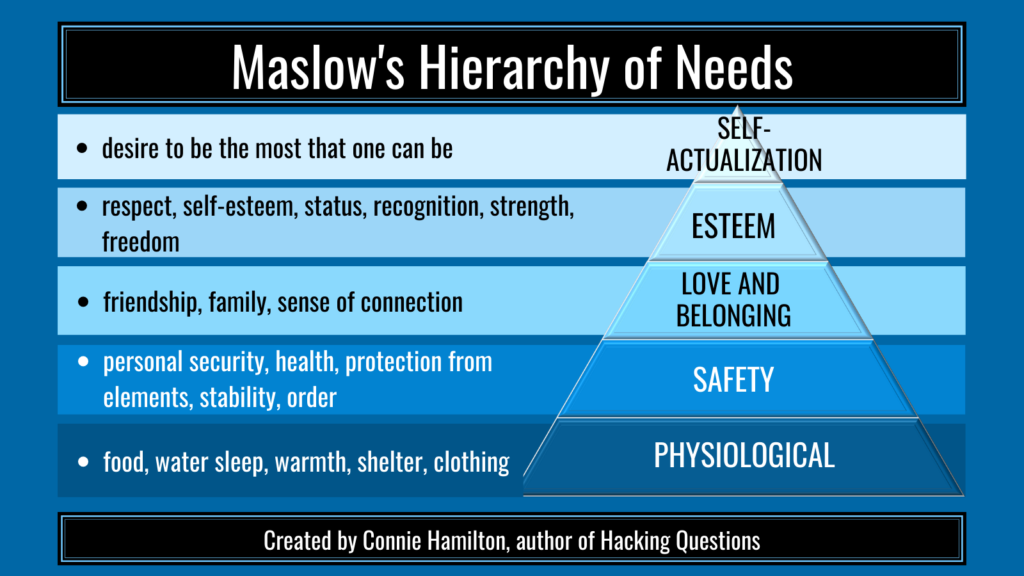
Deficiency vs. Development Wants
Within the first 4 levels—physiological, security, love and belonging, and esteem—Maslow says that we don’t really feel something when these wants are met, however anxiousness kicks in when they don’t seem to be. For instance, when you’ve had an excellent meal, there isn’t a lift of motivation, however starvation can impede an individual’s means to pay attention. He calls these deficiency wants. His idea is that once we are craving physiological, security, belonging, and esteem wants, we grow to be distressed. There’s a destructive impression once we are disadvantaged of those wants, however no impression when they’re met; we merely keep away from disagreeable emotions or responses. (Maslow, 1962).
The highest tier of Maslow’s Pyramid is the place habits and motivation flip. The fifth stage is self-actualization. Self-actualization is the lone motivator that Maslow labels as a development want. Which means that the vitality that’s introduced as anxiousness when in search of success on the decrease 4 ranges converts to actions to enhance oneself on the prime stage.
How the First Three Tiers Play Out in College
Tier 1: Physiological Wants
With out these organic and fundamental wants, the physique can’t perform at its greatest. These foundational wants (air, meals, clothes, heat, sleep, and many others) had been decided by Maslow to be most essential, inflicting the opposite levels to be secondary till these fundamental wants are met.
It’s extra essential than ever to recollect how highly effective these physiological wants are. College students who’re hungry and sleep-deprived should not cognitively open to studying. It’s not that they select to not be taught; their brains and our bodies merely make it extraordinarily troublesome to take action.
Tier 2: Security Wants
Take a tough have a look at the checklist of examples that fall below the stage of security. Safety from parts, safety, order, regulation, stability, freedom from worry. This implies predictability, management of their lives, emotional safety, and social stability are all impacted on this space.
Household and faculties are among the many entities that fulfill these security wants. When Okay-12 schooling—a serious supply of stability for college students—isn’t constant, predictable, and routine, it leaves college students unfulfilled. For instance, when faculties are confronted with a sudden want to alter from in-person to digital, it considerably disrupts the consolation a routine supplies. Established college and classroom routines play a job in college students’ emotions of security at this stage.
Tier 3: Love and Belonging Wants
As soon as the physiological and security wants are met, the subsequent stage concentrates on social interactions and a sense of belonging. That is extra about lack of exclusion and avoiding isolation than it’s about standing. (The extent of clout is extra straight related to the 4th stage, esteem.)
Apart from their households, college students usually expertise emotions of belonging in school. Classroom households, friendship teams, golf equipment, and sports activities groups all provide the sense of being a part of a bunch. College students who’re lacking love and belonging of their house lives can get a few of these wants met within the academic and social settings. We accomplish this by seating preparations, peer companion teams, an general sense of caring and compassion, and taking curiosity in college students outdoors their id as a learner.
The Fourth Tier: The Reality About Esteem Wants
Right here’s the place lots of our assumptions about pupil motivation are debunked when Maslow’s idea is utilized. It’s logical that heat garments, a want for stability, and even a way of affection and belonging are all deficiency wants. A typical false impression is that esteem belongs with self-actualization in that they each drive enchancment of oneself. Whereas that is true for self-actualization, esteem is a deficit want. This implies the motivation is triggered by destructive emotions that lack of esteem generates.
Maslow identifies two classes throughout the esteem stage: (1) esteem for oneself or shallowness, and (2) esteem from others (Maslow, 1987). It’s the second sort that features repute and respect from others that he claims is most essential for kids and adolescents. The need for respect is established earlier than true shallowness is developed (McLeod, 2020).
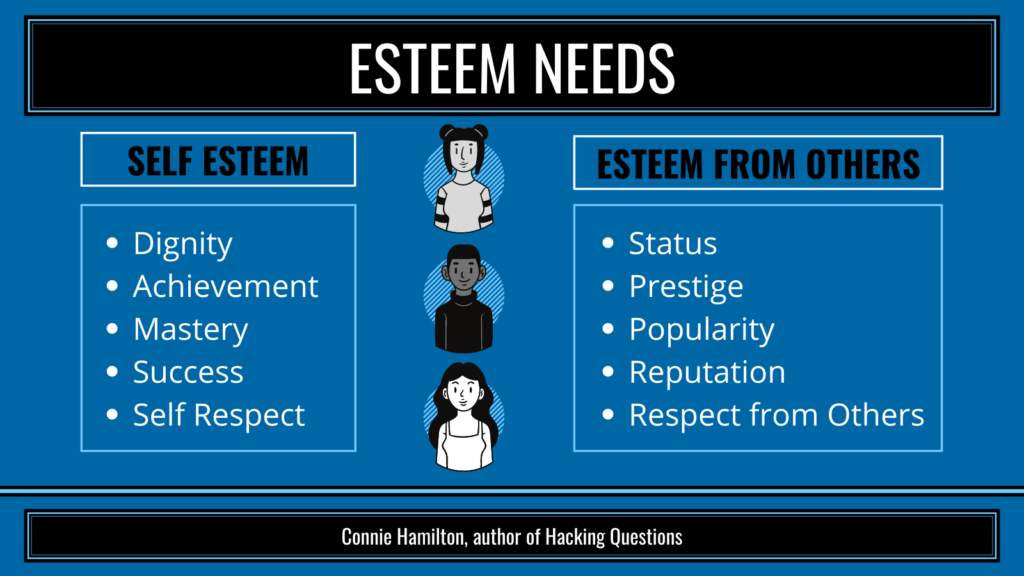
The should be revered by others performs a direct position in college students’ willingness to take dangers within the classroom. If a pupil’s standing is weak, they’re much less more likely to have interaction in actions that can stop their esteem wants from being met. Nevertheless, college students who’ve established reputations with their friends can bounce again from an occasion that might in any other case decrease their social standing.
We regularly acknowledge when college students care extra about what others take into consideration them than their very own success. That is the esteem stage we’re noticing. Adults usually attempt to divert kids’s consideration from their want for respect from others to being content material with themselves. The end result isn’t overwhelmingly efficient as a result of the need to be accepted by others precedes the self-worth youngsters have. This, in keeping with Maslow, isn’t a chicken-egg state of affairs.
Right here’s the difficult half about assembly esteem wants: They will’t be faked. False reward and inflated achievements don’t contribute to a pupil’s shallowness or enhance their repute with others. As a result of esteem is aligned with the inner emotions folks have about themselves, when participation trophies, for instance, are given, the recipients have an underlying consciousness that the trophy wasn’t really earned. So, whereas the constructive consideration is welcomed, it doesn’t positively impression the arrogance folks have in themselves. It may well really work within the reverse means as a result of it calls consideration to an absence of true success which might decrease folks’s beliefs that they’re worthy or succesful (Kay & Shipman, 2018).
When deliberately working to handle the esteem wants of our college students, now we have to offer genuine experiences of information, competence, independence, recognition, and confidence. Regardless that esteem is an inside high quality, it depends on exterior experiences to strengthen or construct it. Of their e book, The Confidence Code, authors Kay and Shipman clarify that confidence—a detailed cousin to esteem—is grown by overcoming challenges. They share that failing quick, then utilizing the teachings discovered from these preliminary failures to ultimately obtain success, is considered one of methods confidence is constructed. If success isn’t finally achieved, and in a real means, then the particular person is just left with a sense of failure and you’ll simply guess what that does to esteem. The system is problem + success (irrespective of how lengthy it takes) = confidence improve (Kay & Shipman, 2018).
When success appears to be a stretch, then the instructor’s focus ought to transfer to lowering the destructive impression a classroom occasion has on damaging esteem. Methods like “cellphone a buddy” have that potential. If college students are requested to offer a response and when invited to get assist from a peer the query then transfers to the peer, the preliminary pupil sees the chance for a standing enhance handed off to a classmate. Nevertheless, if the preliminary pupil requested was offered the selection to solicit a immediate or trace from that classmate, the unique pupil maintains the sensation of success. One big step to constructing esteem in our studying areas could be to scale back the emphasis we place on proper solutions. It encourages dishonest at each stage of the training course of. When college students really feel they need to know the solutions from the onset of a lesson, they have interaction in efforts that don’t promote constructing their data (an esteem booster) however moderately, reinforce a sense of incompetence (an esteem buster).
3 Esteem-Constructing Methods to Strive
In my observations of tons of of classes throughout the nation, the next methods have an effect on the willingness college students should take dangers when confronted with a problem and due to this fact, current the chance to actually pump up esteem. As Kay and Shipman level out, lack of making an attempt ensures confidence won’t rise (2018).
1. Give college students an “out” up entrance.
Provide college students particular language that enables them to “under-commit” to responses or give them a possibility to avoid wasting face. It’s a lot simpler to shift or again away from a solution if it was prefaced with one thing like, “I’d change my thoughts later, however proper now I’m pondering…” versus “I believe the reply is …”
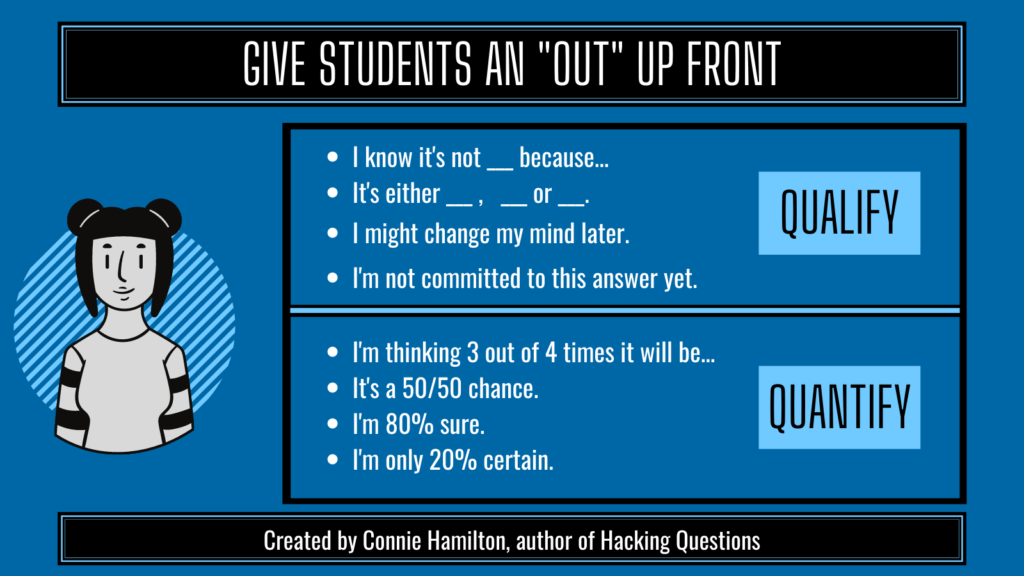
2. Hear for alternatives to raise a pupil’s standing.
Whenever you’re deliberately making an attempt to meet college students’ esteem wants and also you’re not seeing alternatives, create them. You may solicit affirmations out of your college students by calling consideration to contributions they create to the category. Then, whenever you acknowledge an instance of a number of college students impacted positively by one thing a peer mentioned/did, narrate it to name consideration to it. These two actions, soliciting alternatives and labeling make for a stable pairing. Solicit constructive peer feedback, then label them as such.
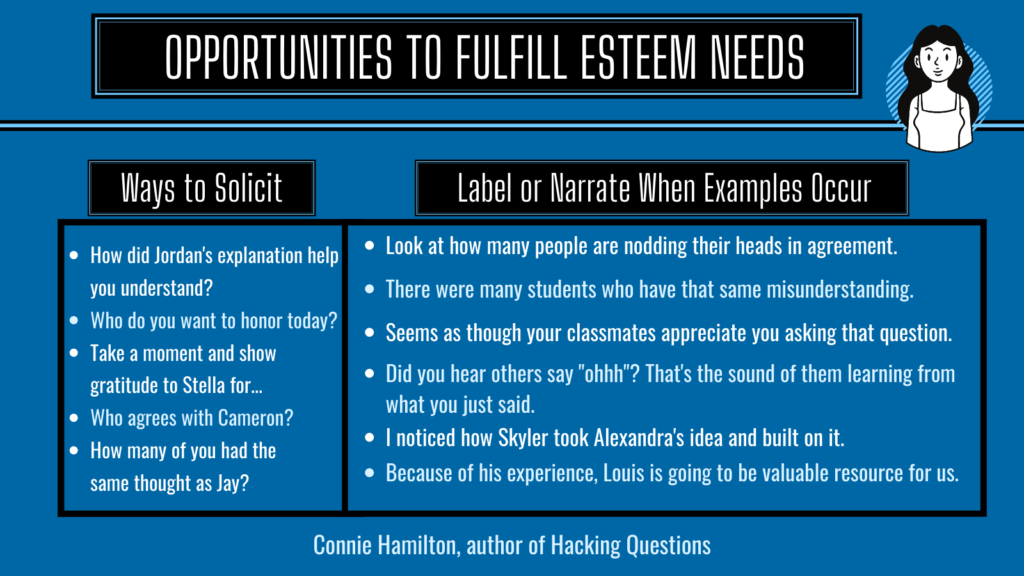
3. Assist Optimistic Peer Interactions.
Classroom tradition and constructions may also be used to encourage methods to assist constructive peer interactions to meet esteem wants. Planning methods to meet the esteem wants of your college students, the outcomes will probably be faster and stronger than when you watch for them to occur organically.
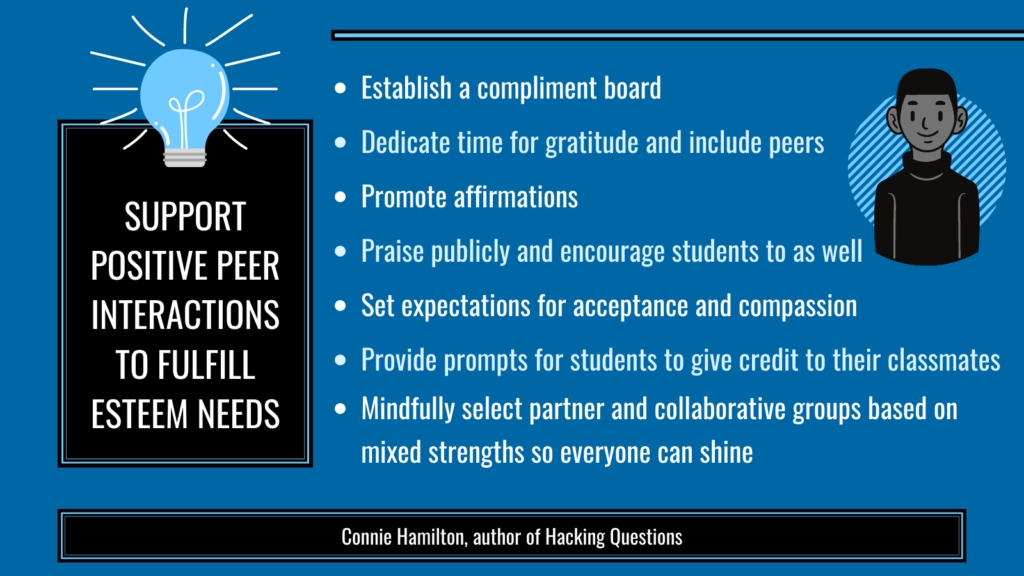
Shifting to Tier 5: Self-Actualization Wants
College students on this stage search alternatives to develop. Examples embrace inventive pondering, contributing to a larger good, self evaluation, and unbiased purpose setting. The forces that feed self actualization, the one development want on the hierarchy, come from throughout the particular person. That is distinctly completely different from the deficiency wants that come from exterior forces. For college students who seem like self actualizing, they’ll thrive in environments that present autonomy, self expression and creativity.
Attending to the hierarchical wants of our college students will assist us present a protected studying surroundings. A spot the place their fundamental wants are met, they’ve a way of security, they usually really feel they belong is important. Consideration to their esteem wants will create a classroom the place college students don’t worry dropping standing or triggering their want to guard their very own self-worth. These ranges are deficiency wants; when they don’t seem to be glad, college students expertise destructive feelings that may drive their actions and impression habits. Slightly than addressing the habits as if the scholar is making an attempt to raise their esteem, search methods to fulfill their should be valued and revered. You’ll have extra luck making a long-lasting change and a constructive impression on the younger people in your classroom.
References
Kay, Okay., & Shipman, C. (2018). The boldness code: the science and artwork of self-assurance– what ladies ought to know. HarperBusiness, an imprint of Harper Collins Publishers.
Maslow, A. H. (1967). A Concept of Metamotivation : the Organic Rooting of the Worth-Life. Journal of Humanistic Psychology, 7(2), 93–127. https://doi.org/10.1177/002216786700700201
Maslow, A. H. (1987). Motivation and persona (third ed.). Harper & Row Publishers.
McLeod, S. (2020, December 29). Maslow’s Hierarchy of Wants. Merely Psychology. https://www.simplypsychology.org/maslow.html
Be part of our mailing checklist and get weekly ideas, instruments, and inspiration that can make your educating simpler and enjoyable. You’ll get entry to our members-only library of free downloads, together with 20 Methods to Minimize Your Grading Time in Half, the e-booklet that has helped hundreds of lecturers save time on grading. Over 50,000 lecturers have already joined—come on in.


